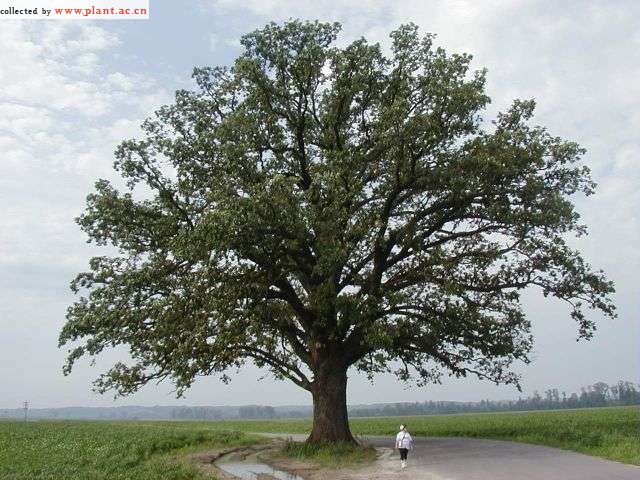Quercus macrocarpaBur oak
科:壳斗科
Family:Fagaceae
属:栎属
common name:Bur oak
introduce:Plant Type: Tree
Family: Fagaceae
Missouri Native: Yes
Native Range: Central and eastern North America
Height: 60 to 80 feet
Spread: 60 to 80 feet
Bloom Time: April
Bloom Color: Yellowish-green
Sun: Full sun (only)
Water: Dry to medium moisture
Maintenance: Low
General Culture:
Easily grown in average, dry to medium wet, well-drained soils in full sun. Prefers moist well-drained loams, but adapts to a wide range of soil conditions. Good drought tolerance. May take up to 35 years for this tree to bear a first crop of acorns.
Noteworthy Characteristics:
Bur oak or mossycup oak is one of the most majestic of the native North American oaks. It is a medium to large sized deciduous oak of the white oak group that typically grows 60-80?(less frequently to 150? tall with a broad-spreading, rounded crown. Acorn cups are covered with a mossy scale or bur near the rim, hence the common names. It is native to a variety of habitats in central and eastern North America. Best growth occurs in bottomland soils, particularly in the Ohio River valley. In Missouri, it typically occurs in low woods and stream valleys in the Ozark region, but on dry upland soils in the unglaciated parts of the state north of the Missouri River (Steyermark). Insignificant monoecious yellowish-green flowers in separate male and female catkins appear in spring as the leaves emerge. Fruits are oval acorns (to 1 1/2?long), with fringed, burry cups that extend to approximately 1/2 to 3/4 the acorn length. Acorns are an important source of food for wildlife. Leathery, dark green leaves (6-12?long) with 5-9 rounded lobes are variable in shape, but ususally have a pair of deep central sinuses that extend nearly to the midrib giving the leaf a waisted appearance. Fall color is an undistinguished yellow-brown. Twigs sometimes are ridged with corky wings. Macrocarpa comes from the Greek words macro (large) and carpa (fruit) in reference to the large acorn size. Bur oak is the Illinois State Tree.
Problems:
Oaks are susceptible to a large number of diseases, including oak wilt, chestnut blight, shoestring root rot, anthracnose, oak leaf blister, cankers, leaf spots and powdery mildew. Potential insect pests include scale, oak skeletonizer, leaf miner, galls, oak lace bugs, borers, caterpillars and nut weevils. Notwithstanding the aforementioned, bur oak is generally considered to be a low-maintenance, long-lived tree.
Uses:
A large shade tree for very large lawns or parks.
